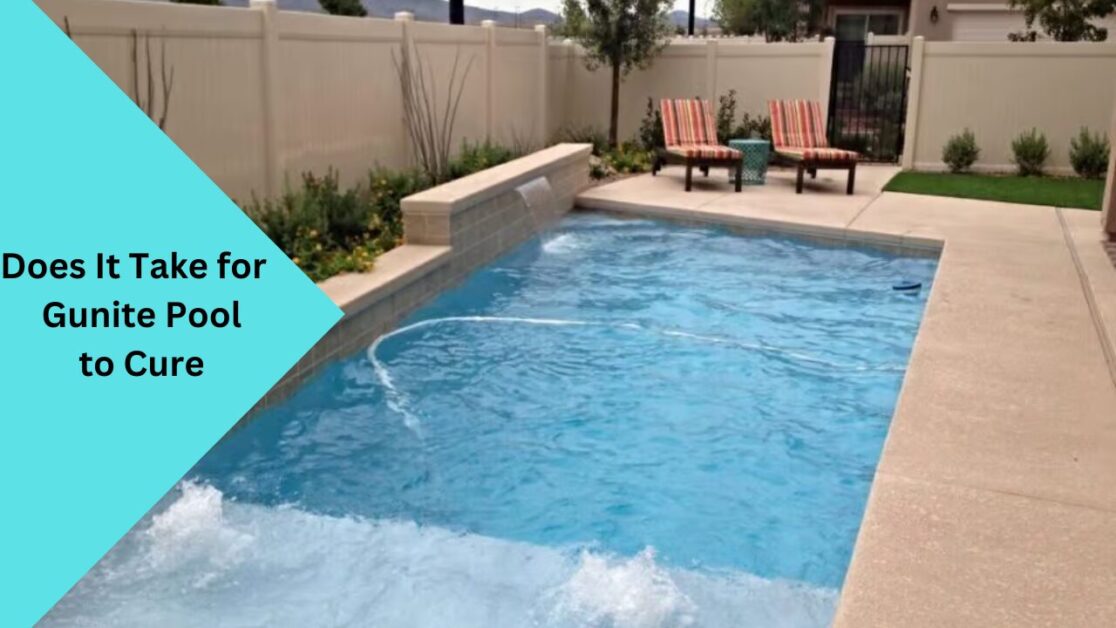Imagine lounging by a shimmering pool on a hot summer day, soaking in the sun’s warm rays while enjoying the refreshing water. Gunite pools are a popular choice among homeowners due to their durability and customizability. However, before diving into the splendor of a newly constructed gunite pool, it’s essential to understand the curing process.
In this comprehensive guide, we will delve into the ins and outs of gunite pool curing time. We will explore the factors that influence the curing process, the ideal temperature for gunite to cure, and delve into related questions such as how long shotcrete needs to cure before plaster. By the end, you’ll be equipped with the knowledge to make informed decisions and ensure your gunite pool is built to last.
- What is Gunite?
- Understanding Gunite Pool Construction Process
- The Curing Process of Gunite Pools
- What is the Best Temperature for Gunite to Cure?
- How Long Does Shotcrete Need to Cure before Plaster?
- How Long Does It Take for Concrete to Cure for a Pool?
- The Lifespan of a Gunite Pool
- Can Gunite Pools Be Repaired?
- Conclusion
What is Gunite?
Before we dive into the details of gunite pool curing time, let’s take a moment to understand what exactly gunite is. Gunite refers to a mixture of cement, sand, and water that is pneumatically sprayed onto the framework of a pool. It is a popular construction method used for both residential and commercial pools due to its strength, flexibility, and ability to create intricate designs. For Depth Details about Gunite check out our latest article about What Are Gunite Pools – Unveiling the Wonders
Understanding Gunite Pool Construction Process
To appreciate the significance of gunite pool curing time, it’s essential to understand the overall construction process. Building a gunite pool involves several steps, including excavation, steel reinforcement, plumbing installation, and the application of gunite. Once the gunite is sprayed onto the pool’s framework, its curing process begins.
The Curing Process of Gunite Pools
How Long Does It Take for a Gunite Pool to Cure?
The curing time for a gunite pool is a crucial factor that affects its strength and durability. While the initial curing period typically lasts around 7 to 10 days, it’s important to note that complete curing can take up to 28 days. During this time, the gunite undergoes a chemical reaction that transforms it into a solid and robust material.
It’s crucial to exercise patience during the curing process to ensure the structural integrity of your gunite pool. Rushing into the next steps, such as plastering or filling the pool with water too soon, can have detrimental effects on its long-term performance.
Factors Affecting Gunite Pool Curing Time
Several factors influence the curing time of a gunite pool. Understanding and addressing these factors can help ensure an optimal curing process for your pool:
- Temperature: The ambient temperature plays a significant role in gunite curing time. Warmer temperatures generally result in faster curing, while colder temperatures can slow down the process. We’ll explore the best temperature for gunite curing in the following section.
- Humidity: High humidity levels can extend the curing time, as moisture in the air slows down the evaporation of water from the gunite mixture.
- Mix Design: The exact composition of the gunite mix can affect its curing time. Working closely with a professional pool contractor ensures an appropriate mix design that balances strength and curing time.
- Pool Size and Shape: The size and shape of your pool can impact the curing time. Larger pools generally take longer to cure, while intricate shapes may require extra attention during the curing process.
By considering these factors and consulting with experienced pool professionals, you can ensure that your gunite pool cures properly and achieves optimal strength.
What is the Best Temperature for Gunite to Cure?
One of the critical factors influencing gunite pool curing time is temperature. Finding the optimal temperature for gunite to cure is crucial to ensure proper curing and prevent any issues down the line.
The ideal temperature range for gunite curing is typically between 60°F (15°C) and 85°F (29°C). Within this range, the chemical reactions within the gunite mixture occur at an optimal rate, resulting in robust and durable pool structures.
It’s important to note that extreme temperatures, both hot and cold, can affect the gunite curing process. In excessively high temperatures, the water within the gunite mix can evaporate too quickly, leading to inferior curing. On the other hand, extremely low temperatures can slow down the chemical reactions, significantly prolonging the curing time.
Working with a professional pool contractor who is knowledgeable about local weather patterns and experienced in gunite pool construction is essential. They can ensure that the curing process aligns with the temperature conditions to achieve the best possible outcome for your pool.
How Long Does Shotcrete Need to Cure before Plaster?
Shotcrete refers to a specific method of applying gunite, using a wet mix instead of a dry one. Shotcrete is commonly used for the application of the initial layer of gunite in pool construction. Before moving forward with plastering, it’s essential to allow sufficient curing time for the shotcrete layer.
Generally, shotcrete should cure for a minimum of 24 to 48 hours before plastering the pool. This initial curing period ensures that the shotcrete develops sufficient strength and stability to support the plaster layer effectively. However, it’s important to consult with your pool contractor, as specific project requirements may vary.
By allowing the shotcrete layer adequate time to cure before plastering, you ensure a strong foundation for the final stage of pool construction.
How Long Does It Take for Concrete to Cure for a Pool?
Concrete is a vital component in the construction of gunite pools, and its curing time is closely intertwined with the overall pool curing process. The time it takes for concrete to cure sufficiently for a pool depends on various factors, including weather conditions and mix design.
Typically, concrete requires at least 28 days to achieve optimal strength. This applies to the entire pool structure, including the gunite and shotcrete layers. While the pool may be usable before the completion of the 28-day period, exercising caution and following your pool contractor’s recommendations ensure the longevity and safety of your pool.
The Lifespan of a Gunite Pool
Now that we’ve explored gunite pool curing time, it’s natural to wonder about the lifespan of these remarkable structures. When properly constructed and maintained, gunite pools can last for several decades.
The lifespan of a gunite pool primarily depends on various factors, including:
- Proper maintenance: Regular pool maintenance, including proper water chemistry, cleaning, and timely repairs, can significantly extend the life of your gunite pool.
- Environmental factors: The local climate, exposure to harsh weather conditions, and surrounding vegetation can also impact a pool’s lifespan. Taking necessary precautions and addressing any issues promptly can help mitigate potential damage.
- Quality of construction: Working with experienced and reputable pool contractors ensures that your gunite pool is constructed to the highest standards, enhancing its longevity.
By investing in regular maintenance and addressing any issues promptly, you can maximize the lifespan of your gunite pool and enjoy its benefits for years to come. For Depth Details, just check out our latest article about How Long Do Gunite Pools Really Last? Unveiling the Truth.
Can Gunite Pools Be Repaired?
Like any structure, gunite pools might require repairs at some point in their lifespan. Whether it’s due to normal wear and tear or unforeseen circumstances, such as damage from extreme weather or accidents, addressing repairs promptly is crucial to prevent further deterioration.
While minor surface cracks may be repaired using appropriate sealants and patching materials, larger structural issues may require more extensive repairs. As the underlying concrete provides the pool’s strength, it’s essential to consult with a professional pool contractor for any repair work.
Repairing gunite pools requires expertise in ensuring the correct mix design, adequate curing time, and compatibility with the existing structure. By working with professionals, you can address any issues effectively and restore your gunite pool back to its optimal condition.
Conclusion
In conclusion, understanding the curing time of a gunite pool is essential for building a durable and long-lasting pool. By allowing the gunite to cure properly, considering factors such as temperature and humidity, and following expert advice, you can ensure the structural integrity and longevity of your pool.
Remember, patience is key when it comes to gunite pool construction. Rushing through the curing process can compromise the pool’s strength and result in costly repairs down the line. So, take the time to allow your gunite pool to cure thoroughly before proceeding with subsequent steps.
Additionally, regular maintenance, proper care, and timely repairs can significantly extend the lifespan of your gunite pool. By investing in ongoing upkeep, you can continue to enjoy the beauty and functionality of your pool for years to come.

Greetings, fellow pool enthusiasts! I’m Turner Davis, your dedicated guide to the world of pool care and maintenance. With over a decade of experience in the field, I’ve made it my mission to transform ordinary pools into extraordinary aquatic retreats.

